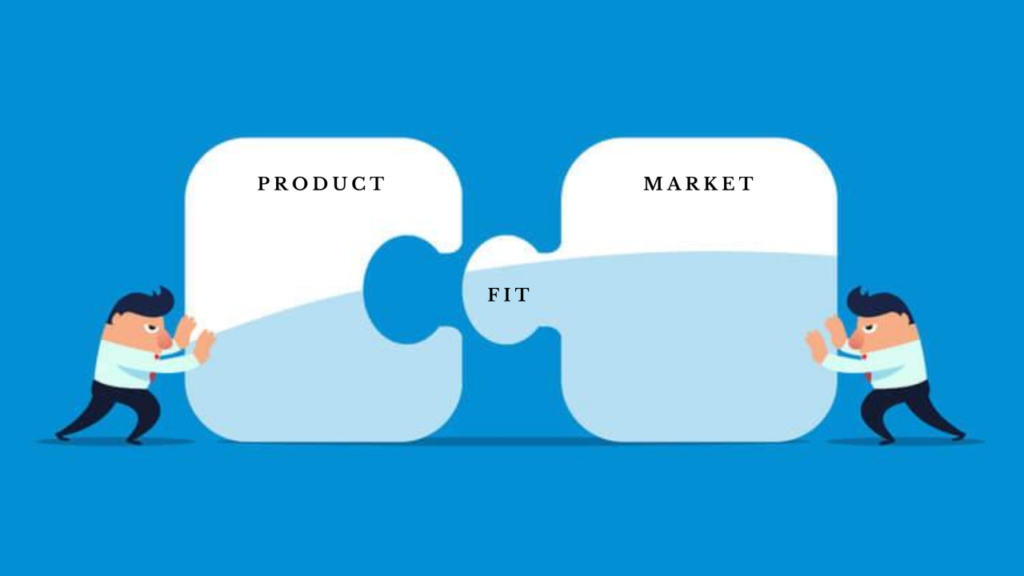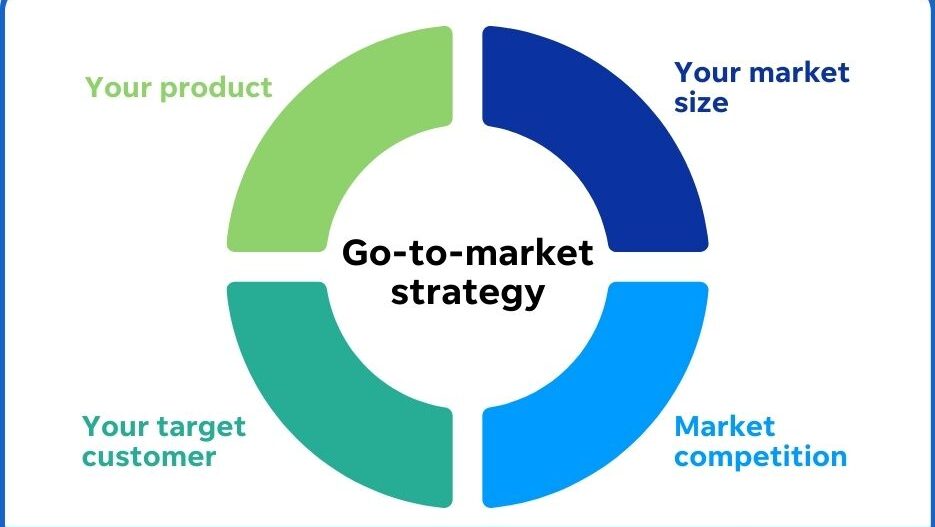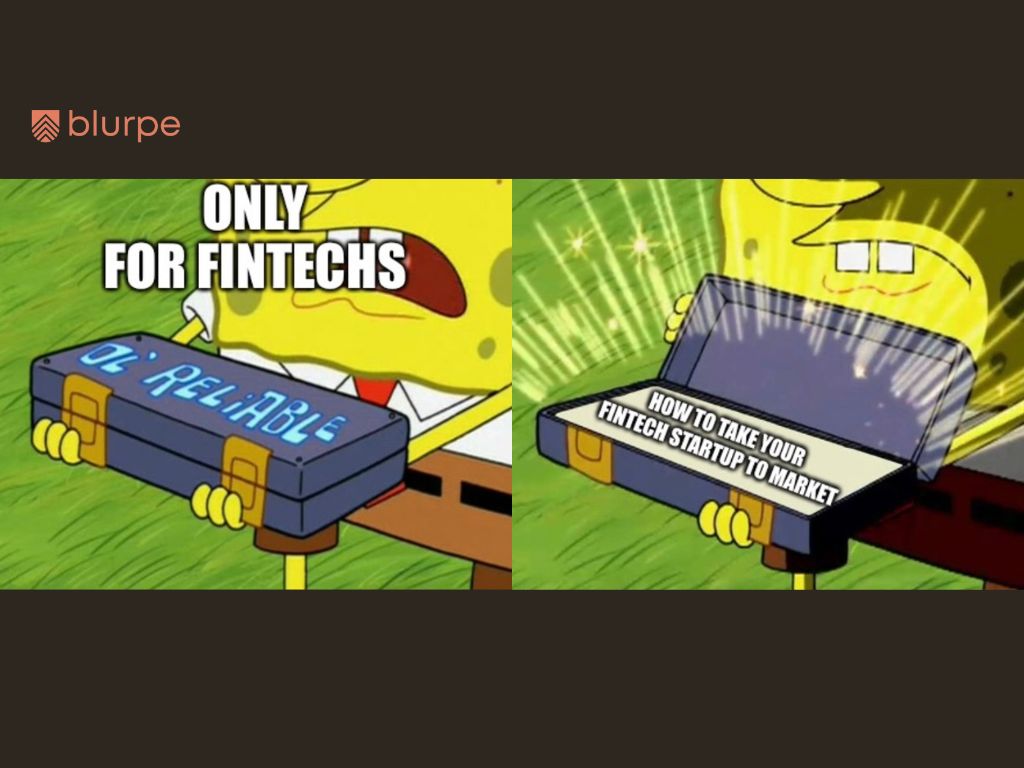There are over 200 fintech startups in Nigeria. This number has a higher chance of increasing in tens especially since it is arguably one of the most thought of tech ventures for upcoming founders. In a sea of fintech companies, the one question you should be asking is “How to take your fintech product to the market and get it to your target audience?”
As a financial service builder in Nigeria, your case is even more unique due to certain factors that may be outside your control. That would probably be a discussion for another time. For now, let’s focus on getting your product into the hands of your audience. But first things first, what qualifies as a fintech startup?
What is a fintech startup?
In its simplest form, a fintech startup is an enterprise that utilizes technology to revolutionize financial services. Okay, perhaps put in an even simpler form _the simplest form_ is that, unlike traditional financial alternatives, fintechs offer fast-paced and innovative solutions to financial concerns like payments, investments, savings, loans etc. They are in the business of making finance more accessible, efficient, and downright easy.
Examples of fintech in Nigeria include:
- Flutterwave
- Interswitch
- Paystack
- Kuda
- Piggyvest
- Palmpay
- Opay
- Moniepoint
- And a host of others
Along with notable fintech companies, new fishes are emerging now and then but if you’re looking for the fastest way to identify one, check for these lingos: “seamless”, “with ease”, “fast payment” etc. They are top-rated words and phrases Nigerian fintech like to associate their brand with _ newbies and even oldies inclusive_ so that should do. You’re set with all you need to know now.
What is Fintech Marketing?
It is the total marketing efforts, strategies and techniques suited to advance the cause of a financial technology solution/company. It aims to drive adoption, engagement, retention and loyalty of customers to the company while employing feedback to constantly modify the product so it serves the best interest of the users.
Next agenda? Getting that product to the market
Start with a product-market fit startup

Marketing your product starts at the building stage. No great marketing ever started post-building (not like building ever stops but you get the point) and no great fintech product started by excluding marketing perspective.
That’s the mistake a lot of fintechs make. They start their “marketing” after building the product and expecting somehow that they will amass users in their hundreds and thousands. We hate to break it to you but you’re towing the “not here for the long run” road.
Your fintech marketing starts with aligning your product with what the market wants. This way it’s easier to cut through the noise and deliver a product that your target market will actually use. For this, you need a badass marketer.
And we know that some fintechs believe that a product manager is enough “marketing personnel” for their team (chuckles in danger). Having a product manager is great (You’ll need one) but they are not marketers. As such, they are not fully equipped to solely lead marketing research and preside over marketing decisions that would affect your startup in the long run.
Research and Groundwork
Groundwork is always the first work. You need to understand your target market’s psyche, needs, desires and pain points. This is what validates whether or not your solution is viable or needed. You want to know what existing solution your target market is using to solve the financial need you’re aiming to solve. The lapses and how yours fit right in as an obvious saviour. This stage is about uncovering insights that will shape your entire marketing strategy.
The purpose of this prep work is to ensure that your solution is a match made in heaven for your target audience’s pain point. To achieve this, you need to ask the right questions:
- Do we have a problem worth solving?
- Have I built something people want?
- How do we accelerate growth and adoption?
These three questions are a prerequisite for one question that can answer whether you are inching closer to product market fit. The quickest way to answer these three questions is to start with the base idea of the financial service or product. Test with your target audience, get and incorporate feedback on the product.
Observe how your customers use your fintech product to solve their problems. After a set duration of gathering this data, you can then ask your test runners one very specific question:
- How would you feel if you could no longer use this product?
Sean Ellis who formulated this pivotal Product market fit format states that if over 40% agree that they would be very disappointed if they could no longer use your product, then there’s a great chance that you’ve got yourself a fintech solution with a great chance in the market
Go-To-Market Strategy for Your Fintech Startup

As a fintech startup, your go-to-market strategy is your plan for attracting, engaging and retaining your target audience (and their wallets). For a fintech startup, these are the steps to designing your go-to-market strategy:
- Set your value proposition
- Map out your messaging and positioning
- Choose your distribution channel
- Design your revenue model
- Develop your marketing strategy
- Test and Reiterate
Set your value proposition
Define the advantages your customers will get from using your fintech product or service. To succeed in a crowded market, your value proposition must resonate with your customers. It should offer benefits that address the pain points of your audience.
To be clear your unique value proposition is not the features of your product but the benefits it offers. It should be clear, easy to understand and it should tackle the core concern of your target audience. This article by Harvard Business School would help you create a top-notch value proposition.
Map out your messaging and brand positioning
Your messaging and positioning are what sets your product offering apart from that of your competitors. You want your fintech’s brand voice to stand out. Identifiable when seen and heard by your users. Make no mistake, how you look and sound matters a lot to your audience and plays a big role in convincing them to trust you with their monetary decisions.
You can have the best marketing plans but if your brand sounds and looks like no thought was given to it, you should reconsider getting into the fintech industry. The best guys look and sound premium. They understand the power of messaging and branding in evoking powerful feelings that keep them memorable. Your best bet for achieving this is a product marketer. It is their job to take in everything there is to know about your users and transform that into key messages that would resonate with them.
Choose your distribution channel
Think of the most perfect outfit you have in your wardrobe. Now envision wearing it to an ill-fitting, drab and boring event. Yuck, yes? Exactly. Your fintech product should meet your customers at the perfect place (or event, if you will).
Think of the right places to find your target audience and go right there. Whether it’s social media, search engines, or good old-fashioned email. It’s not just about being present – it’s about optimizing each channel for maximum impact.
Word and truth is we’re in the social media age but truth can be subjective. Your customers might be offline so employing the best digital marketer will do you next to no good. Find out whether they are online and if so, where online are they? What platforms do they visit the most? Or are they offline in the market, stores, mini marts or whatever new version of market exists nowadays?
Types of Channels Your Fintech Can Explore
- Social Media Optimization
- Content Marketing
- Influencer marketing
- Word of mouth Marketing
- Digital Ads
- Event Marketing
- Partnership
- Email Marketing etc
Here are 6 power tips to help you optimize your fintech’s distribution channels
1. Set the ideal channel mix. An example could be partnership and social media, figure out what works best.
2. Offer value across different touchpoints of your distribution channel
3. Invest in SEO for long-term online visibility
4. Invest in social media marketing for online brand presence
5. Experiment with online and offline campaigns to be sure of the most yielding channel
6. Double down on the channel that proves most effective
Design your revenue model
Helping people solve their financial problems should start from home, don’t you agree? You need to generate income from your fintech product or service to continue rendering it. First things first, you need to ensure that your financial model captures all the key points of your business and that it is flexible enough to adapt to changes.
Next, pinpoint where you want to generate income from. It could be from transaction fees, subscription fees, data fees, advertising fees or other points. Having a revenue model helps you track your financial performance and make better financial decisions that will keep your fintech in operation. Here’s a more comprehensive article by Plaid on how fintechs make money and how to model your revenue.
Develop your marketing strategy
This is where you thought you’d start. Ha ha ha, you didn’t see all the precluding part coming but we’re here now. In developing marketing goals for your fintech startup, you need to first set the goals you want to achieve. Your marketing strategy should be based on a deep understanding of your customer’s journey. Following this, the accurate step is:
- Awareness
- Acquisition
- Activation
- Retention
- Referral
- Loyalty
Starting from the top, you want to capture the attention of your target audience, people who are facing the problem that your fintech service or product is solving. Create a strategy to reel them in and to try your product for the first time (we’re hoping that the first interaction with your product is good enough to make a mark).
Once they perform the action you have set as your activation action, the next thing is to ensure that there is a repetition and further use of your platform’s other benefits (if any). Then they can refer your fintech app to friends, make a post about it and down the line develop a keen sense of loyalty to your financial service or product.
Achieving whatever set marketing goal requires that you choose the right marketing tactics, have a marketing budget (prioritize a budget no matter how small) and set metrics to help you track the progress and performance of set goals.
Pro-tip: Don’t shoot blanks when it comes to your marketing efforts. Knowing where to invest your marketing budget will come from the research you carried out (yep.. The ones you read earlier in this article). You’ll know where to find your target audience hence which channel will be best to employ your marketing strategies.
Test and Reiterate
Nothing will prepare you for the dynamics of executing all the plans you have documented. The only way to know is to test your market strategy. The popular, less chosen but most effective route to take is launching with an MVP (Minimum Viable Product). This version of your fintech product (you can attach 1.0 like many fintech predecessors) is the best method to collect feedback from users and analyze the data gathered from marketing efforts, customer behaviour and other valuable insights.
The feedback and data you gather will help improve your product, your value proposition and market strategy. When it comes to carving a place for your fintech startup in the market, testing and reiteration never stop. You need to be constantly experimenting and iterating. It’s all about taking calculated risks, testing new ideas, and learning from your successes (and failures).
An extra boost for fintech marketing?
Customer service
Customer service – the unsung hero of marketing. This aspect has spoilt the reputation of several fintech startups. A great product, good marketing, jaw-dropping budget but zero customer service. It is like a meal that smells so nice but tastes bad. No matter how you see it, your startup is run in an industry that concerns itself with money – something a lot of people don’t take lightly.
Most fintech founders agree that fintech is the ghetto and part of what sums it up as that is the compulsion to operate optimally because of the risks involved. Customers want to know that they are safe with your product and that they can reach you when the need arises.
Exceptional customer service can be a game-changer. It’s not just about resolving issues; it’s about building relationships and turning customers into loyal advocates. Remember, happy customers are the best marketing strategy money can’t buy.
You’ve got a good entry point for effective fintech marketing. What approach should you take for your overall marketing strategy?
Agile Marketing Approach
Agile marketing is a marketing approach that is customer-centric, iterative and places emphasis on quick and flexible marketing strategies. This method encourages the “fail fast and fail forward” concept, increasing productivity and scalability. For a fintech venture entering the market, continual improvement is the name of the game.
This requires a dedication to rapid experimentation and fostering cross-functional collaboration within your team. Everyone must be actively involved to drive the growth and adoption of your fintech service. The core concept here is to concentrate on delivering substantial value to your customers, resulting in a swift time to market, a heightened likelihood of adoption, the creation of innovative and creative marketing campaigns, and a risk reduction.
Embracing an agile marketing approach for your fintech startup can be the distinguishing factor between you and your competitor. You can position your fintech as a key player in the fintech industry and as a first choice for your target market.
Key Takeaways
- Nail that product-market fit before anything else.
- Research – know your audience inside and out.
- A go-to-market strategy is a foolproof plan for your fintech product
- Optimize your distribution channels for maximum impact.
- Set your fintech startup apart with Messaging Brand positioning
- Don’t neglect your revenue model – it’s the way your startup stays alive
- Prioritize exceptional customer service – it’s a game-changer
- Embrace Agile marketing
